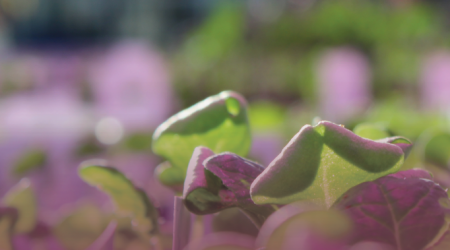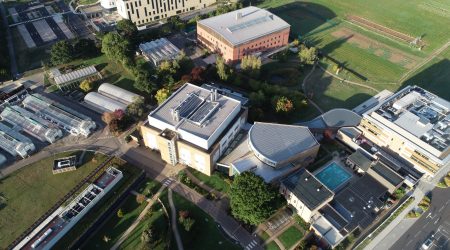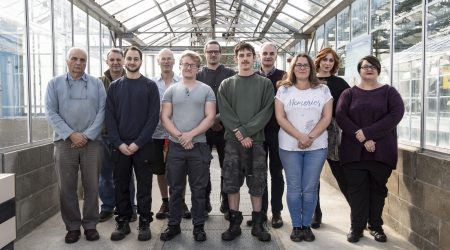When the Covid-19 pandemic led Britain into lockdown, the institutes at Norwich Research Park closed, sending the research community off-site to work from home and leaving behind thousands of plants, crops and experiments at various stages of their development
These plants were not abandoned however, because the John Innes Centre Horticultural Services team, and a small number of essential workers, remained on site throughout the lockdown to ensure years’ worth of plant germplasm was protected and saved.
– John Lord, Head of Horticultural Services
“Potting and pricking out would have stopped; seed, seedlings and young plants would have been wasted. The cereal-growing area would now be empty rather than full of young plants for the science teams to work on.”
The volume of work facing the small team that make up ‘Horts’ was immense. When the John Innes Centre went into shutdown, researchers closed their projects. It left John and his team with a tremendous amount of material to dispose of through the autoclave, steam sterilising units.
The shutdown came just after a period of harvesting, so this plant material needed processing. There was also three major ongoing projects. Work included regeneration of unique cereal and pea stock in the Germplasm Resources Unit to be used for future plant breeding, and planting 3,000 ash trees to support Professor Brown’s work on ash dieback.
“The shutdown came at what was already an immensely busy period, but for me it was hugely rewarding to see the team responding so positively to the situation. It was all hands to the pump,” recalls John. “Working so closely with the team gave me a clearer insight into what further improvements we could make to improve the service to science. I’m an optimistic person so always look for the positive, and this period of adversity definitely brought things into focus.”
An on-site horticultural team has long been a key part of the John Innes Centre scientific machine, looking after one million-plus plants requested by the research community each year, across 70 glasshouses and Controlled Environment Rooms (CERs).
The team and the services they offer have undergone a wide-ranging series of improvements to ensure that they are meeting what John terms “the three Es”: efficiency, economy and effectiveness.
“We’ve implemented more automatic irrigation across the site, including recently in our largest CER. This greatly improves the consistency of watering the plants for science but also helps to save on water. We have also made big strides with our LED lights, which have proven more efficient and, crucially, more effective. They have delivered some really good results after some early teething problems. The cost of running lights on site is reducing year-on-year.”
Anyone who has visited the glasshouses, or seen an aerial photograph, will be familiar with the vast glass roofs which sprawl across the site in scenes almost unchanged from when the John Innes Centre relocated to Norwich in 1967.
“We’re dealing with very old glasshouses, which have a number of inherent issues, meaning there’s only so far we can go,” says John.
As the world emerges from lockdown and starts to consider what the future will look like, John is busily planning for science’s ‘new normal’.
“Our plan is to ramp up the CER space and reduce the amount of glasshouses because they are less effective. We’d also like to provide for bigger crops like cereals, with an artificial growing house, where we can control the environment to a greater degree all year round.”
Another area that will remain at the forefront of this planning is the environmental impact of research, for example the use of peat in compost used on site. Here, too, John and his team have been working towards being able to offer scientists improved, more environmentally sustainable options.
“We can’t get away from the fact that peat is a very stable base material and we need to provide a consistent growing media for our scientists. However, my colleague Lionel Perkins has been running a series of trials of peat-free compost across the various plant species. We are building up the results of these trials and within a year we hope to have results that will show we can start to gradually move away from peat.
“We need the flexibility moving forward to meet the needs of the future, be they peat-free compost, aeroponics, hydroponics, CO2 enrichment in glasshouses, whatever our scientists need. Ultimately, we continue to strive to offer world-class horticulture, to support our world-class science.”






